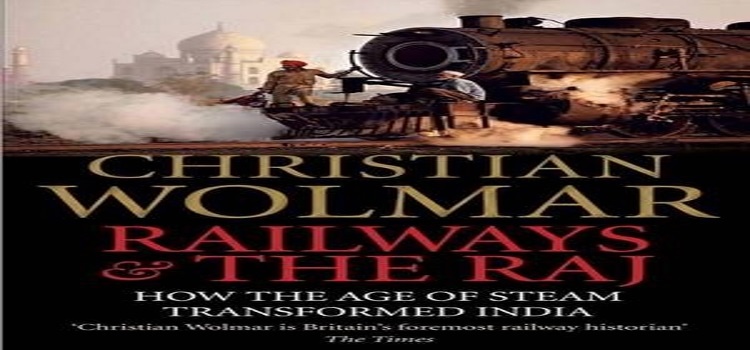
India’s railways carry eight billion passengers a year, and a billion tonnes of freight; the 42,000 route miles cover all kinds of terrain, and the trains run through weather which is often violent in many ways. The railways have also played, and still play, a transformative role in almost every aspect of Indian life, and Christian Wolmar tells this very complex story easily and directly.
In the early 1850s, the then Governor-General, Lord Dalhousie, saw the railways as an asset in his gigantic yet thorough plan to extend British power. He thought that the railways would encourage enterprise, expand production, aid the discovery and exploitation of natural resources, and even help social progress — and that they would also strengthen British rule. The main objector, the East India Company, which had a near-monopoly on colonial trade in India, gave way.
Subsidy route
Yet in an age when the idea of the state as a major economic actor was almost unimaginable, the problem was that of attracting British railway companies to undertake the immense projects involved. The companies finally agreed to a compromise; the colonial government guaranteed a return of 5% on their investment, when the current lending rate was 3%. Moreover, taxpayers in India — colonials and Indians — carried the risk, while shareholders in Britain got the ‘profits’. Only two of the lines thus constructed broke even, and the guarantees eventually cost the government of India about £50 million, while moderately wealthy people in Britain bought railway shares for the guaranteed returns. The companies became what Wolmar calls subsidy junkies; the government eventually took over many lines, and the writer acerbically notes the similarities to today’s public-private partnerships, or private finance initiatives in their British avatar. The tight central procedures — despite the lack of control on actual project costs — and the absence of a white-collar criminal class, however, meant that corruption was lower than it had been on U.S. railroads, even if the procedures also spawned India’s bureaucracy.
The initial lines were laid in eastern India and inland from Bombay; the eastern line had to bridge colossal rivers, and the western one involved steep climbs and tunnels across the Western Ghats. Conditions for the workers — large numbers of whom were brought by brokers from far across India — were terrible, and about 25,000 died on the ghats project.
British overseers were openly racist, and readily adopted casteist generalisations about the workforce, though some of them learnt that local timbers and certain local techniques were best for the conditions. Some even learnt from the contractor Jamsetji Dorabji, who earned his workers’ trust, and also — possibly because he was illiterate — had a prodigious memory. Most strikingly too, the ghats line was built by Alice Tredwell, who took over when her contractor husband Solomon died after a month in India.
Racist approach
India’s technical advantage in entering the railway age two decades after the industrial powers did not last, but by the late 19th century the railways were an integral part of imperial India, despite the problems caused by a multitude of gauges, owners, and company systems. Wolmar covers life and work on the railways, and much else until and including today, with examples both appalling and entertaining. In the early days, third-class passengers were locked into bare and windowless steel wagons; the railways helped spread cholera and plague, and even elite Indian passengers started criticising conditions in third class. Yet the poorer passengers, as Wolmar shows, subsidised the richer ones and helped British profits.
Unpleasant journey
All passengers, though, had to face their own demons over shared trains and stations; the Calcutta High Court judge Sir Asutosh Mukherjee awoke in a lower berth to find that a Britisher in the upper berth had thrown his slippers out of the window — but when the colonial could not find his own jacket Sir Asutosh told him the jacket had gone to look for the slippers.
Some ambitions were not realised; freight was one of Dalhousie’s original concerns but never grew as he thought it would, and was also a magnet for corruption after Independence; the north-western lines, built in fear of Russian expansion, were a huge waste of money, in what looks like an early form of the military-industrial complex. The railways served only partly to move troops to where they might be needed in possible rebellions, and their record in famine relief was also patchy. The Indian nationalists, for their part, distrusted the railways for extending British power, for reshaping aspects of Indian society, and — as the author shows — for restricting India’s economic development. Yet all Indians accepted the iron road; Wolmar adds, ‘In no other country is the railway so indelibly connected with the image of the nation.’
